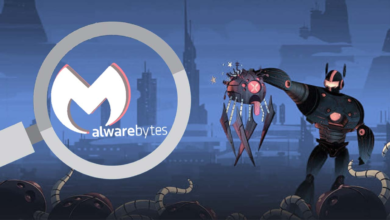The Future of Biohacking in the U.S.
Discover the future of biohacking in the U.S. cutting-edge tech, longevity research, and ethical debates shaping human enhancement.

Future of Biohacking is rapidly transforming how Americans approach health, wellness, and human enhancement. As technology advances, the line between biology and DIY experimentation continues to blur, offering unprecedented opportunities for optimizing physical and cognitive performance. From wearable devices and nootropics to genetic engineering and implantable tech, biohacking is no longer a fringe movement but a growing trend with mainstream potential. In the U.S., where innovation thrives, biohacking is poised to revolutionize medicine, fitness, and even longevity.
The future of biohacking in the U.S. is a fascinating intersection of science, technology, and self-experimentation. Once confined to Silicon Valley tech enthusiasts and underground labs, biohacking has now entered the public consciousness, promising enhanced mental clarity, extended lifespans, and superior physical performance. As more Americans embrace personalized health solutions, biohacking is evolving from a niche hobby into a legitimate field of research and innovation. However, its rapid growth raises critical questions about safety, ethics, and regulation.
The Future of Biohacking in the U.S.
The Current State of Biohacking in the U.S.
Future of Biohacking in the U.S. has grown from a grassroots movement into a multi-billion-dollar industry. Enthusiasts leverage a mix of technology, nutrition, and biochemistry to enhance their bodies and minds. Wearable devices like fitness trackers and continuous glucose monitors provide real-time health data, allowing users to optimize their diets and exercise routines. Nootropics, or “smart drugs,” are increasingly popular among professionals seeking cognitive boosts.
Rise of Biohacking Communities
The rise Future of Biohacking communities, online forums, and specialized clinics reflects its expanding influence. Companies like Bulletproof, HVMN, and Thync cater to biohackers with supplements, brain-stimulating devices, and personalized health programs. Silicon Valley elites, including Bryan Johnson founder of Kernel and Project Blueprint and Dave Asprey creator of Bulletproof Coffee, have become prominent figures in the movement, investing millions in longevity and human enhancement research.
FDA struggles
Despite its potential, Future of Biohacking remains controversial. The FDA struggles to regulate unapproved supplements and experimental procedures, raising concerns about safety. Stories of biohackers suffering severe side effects such as infections from DIY implants or adverse reactions to untested compounds highlight the risks of unregulated experimentation. This article delves into these questions, examining the trends, technologies, and debates shaping the future of biohacking.
Key Technologies Driving Biohacking Forward
Wearable and Implantable Tech
Wearables like the Oura Ring, Whoop, and Dexcom G7 provide users with detailed insights into their sleep, heart rate, and metabolic health. The next frontier is implantable tech microchips that monitor glucose levels, NFC-enabled RFID implants for digital access, and even brain-computer interfaces (BCIs) like Elon Musk’s Neuralink, which aims to merge human cognition with AI, their relentless pursuit of self-improvement borders on fixation. Many devote hours each day to tracking sleep, nutrition, and metabolic data, striving for peak performance.
Genetic Engineering and CRISPR
CRISPR-Cas9 has revolutionized gene editing, allowing scientists and even amateur biohackers to modify DNA with unprecedented precision. While CRISPR holds promise for curing genetic diseases, its misuse raises ethical concerns. The infamous case of He Jiankui, who edited the genes of twin babies in 2018, sparked global outrage and calls for stricter oversight. Whether it’s experimenting with nootropics for cognitive enhancement, implanting microchips for biometric tracking, or testing extreme fasting protocols for longevity.
Nootropics and Bioenhancement Drugs
From Modafinil to Lion’s Mane Mushroom, cognitive enhancers are gaining traction among students, executives, and gamers. Pharmaceutical companies are developing next-gen nootropics designed to improve memory, focus, and mental stamina without harmful side effects. Meanwhile, more extreme biohackers experiment with gene editing (CRISPR), implantable chips, and even DIY medical procedures.
Biohackers are Obsessed
Biohackers are obsessed with extending lifespan. Future of Biohacking Techniques like intermittent fasting, NAD+ boosters, and senolytics drugs that target aging cells are being tested for their anti-aging effects. Companies like Altos Labs and Calico backed by Google are investing billions in longevity science. Biohackers are obsessed with pushing the boundaries of human potential, constantly seeking new ways to optimize their bodies and minds.
DIY Biology and Citizen Science
The rise of community biolabs allows amateur scientists to conduct experiments outside traditional institutions. While this democratizes science, it also poses biosecurity risks if harmful pathogens are mishandled. However, with great power comes ethical dilemmas, regulatory challenges, and safety concerns. This article explores the current state of Future of Biohacking, its future trajectory, and the implications for society.
Ethical and Regulatory Challenges
Safety Risks: Unregulated experiments can lead to severe health consequences. Inequality: Cutting-edge biohacking is expensive, potentially creating a divide between enhanced and non-enhanced individuals. Privacy Concerns: Implantable tech and genetic data collection raise issues of surveillance and data misuse. The U.S. government faces the challenge of fostering innovation while ensuring public safety. The FDA has begun cracking down on unapproved biohacking treatments, but enforcement remains inconsistent.
The Future of Biohacking Predictions for the Next Decade
Personalized Medicine: AI-driven health optimization tailored to individual genetics. Human Augmentation: Brain implants enhancing memory and cognition. Longevity Breakthroughs: Drugs that extend healthy lifespan by decades. Bio-Digital Integration: Seamless merging of biological and digital systems. However, societal acceptance will depend on addressing ethical concerns and ensuring equitable access. Some argue for a “right-to-try” approach, allowing individuals to experiment with their bodies, while others demand stricter regulations.
Longevity and Anti-Aging Research
Longevity and anti-aging research is one of the most exciting frontiers in biohacking, focusing on extending human lifespan and healthspan through scientific breakthroughs. Scientists and biohackers are exploring interventions like senolytics drugs that clear aging cells, NAD+ boosters, rapamycin, and caloric restriction mimetics to slow down or even reverse biological aging. AI-driven drug discovery suggest that radical life extension may soon transition from science fiction to reality.
Read More: How Telecom Is Powering Smart Cities in the USA
Conclusion
The future of biohacking in the U.S. is both exhilarating and uncertain. As technology continues to evolve, biohacking will push the boundaries of human potential, offering solutions to age-old problems like disease, aging, and cognitive decline. However, without proper oversight, it could also lead to unintended consequences, including health risks and societal disparities. The challenge for policymakers, scientists, and biohackers alike is to strike a balance between innovation and responsibility.
Ultimately, Future of Biohacking represents a new frontier in human evolution. Whether it becomes a force for widespread good or a tool for inequality will depend on how society chooses to regulate and integrate these advancements. One thing is certain: biohacking is here to stay, and its impact will shape the future of health, technology, and human capability in ways we are only beginning to imagine. As research progresses, companies like Altos Labs, Calico, and Lifespan.io are investing billions into longevity science.
FAQs
What is biohacking?
Biohacking involves using science, technology, and self-experimentation to enhance physical and mental performance. This obsession often blurs the line between science and self-experimentation.
Is biohacking legal in the U.S.?
Most forms are legal, but unapproved medical procedures and genetic modifications can face regulatory action, driving both groundbreaking innovation and risky, unproven practices.
What are the risks Future of Biohacking?
Potential risks include health complications, infections from implants, and unverified supplement side effects.
Can biohacking extend lifespan?
Some techniques like fasting and senolytics show promise, but no proven method currently guarantees longevity.
How can I start biohacking safely?
Begin with wearable tech, proven nootropics, and consult healthcare professionals before extreme measures.











